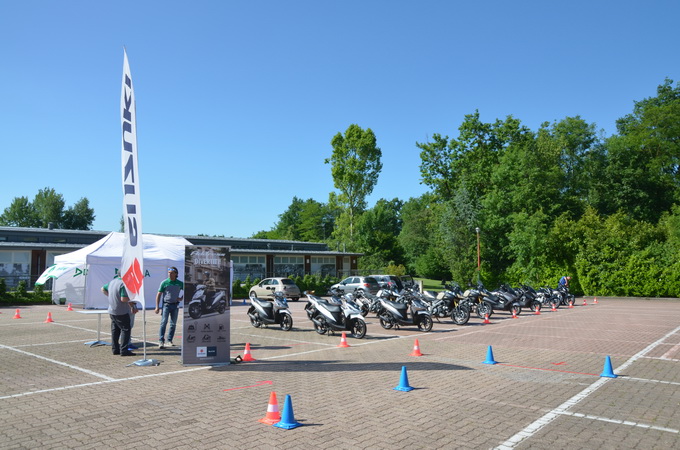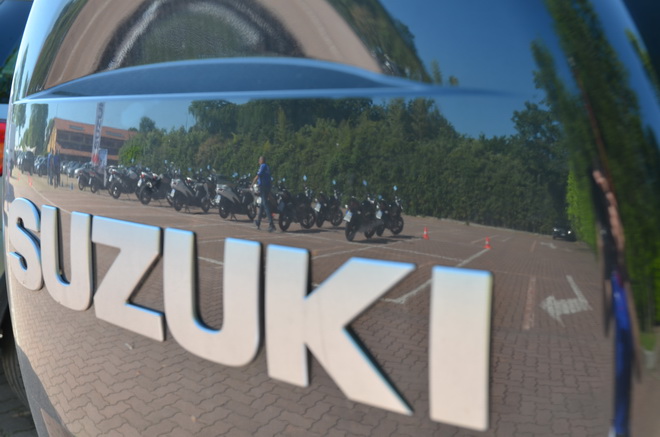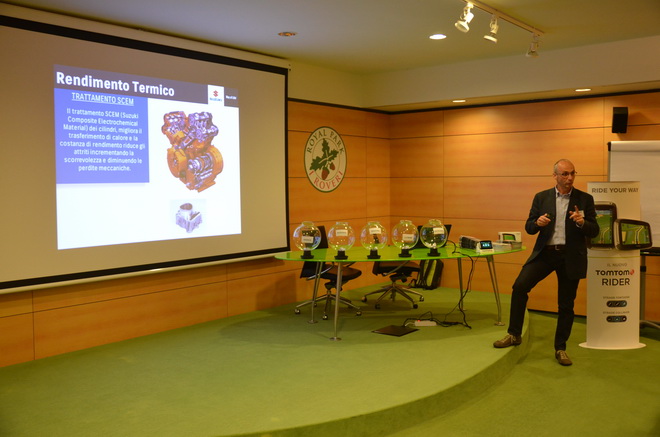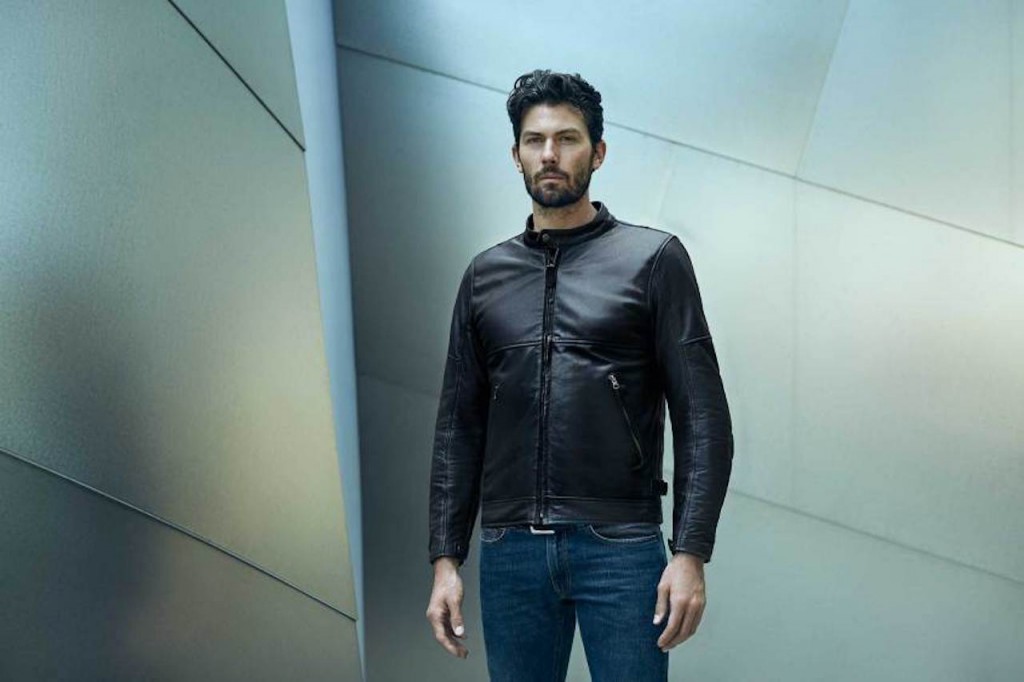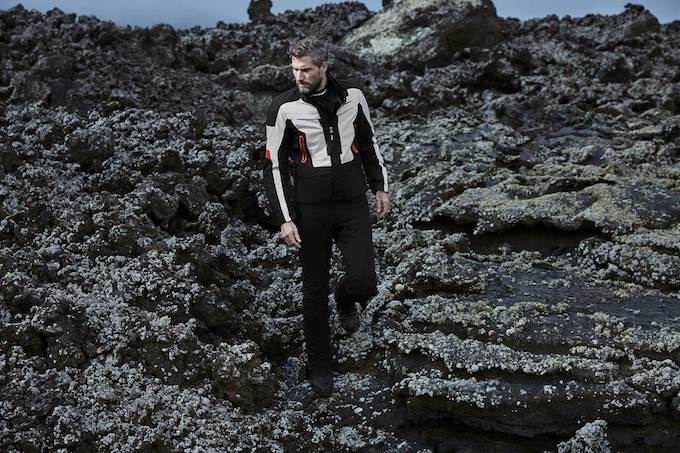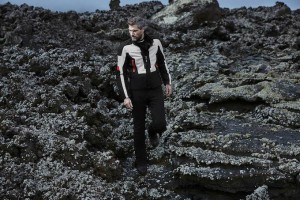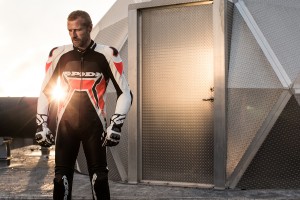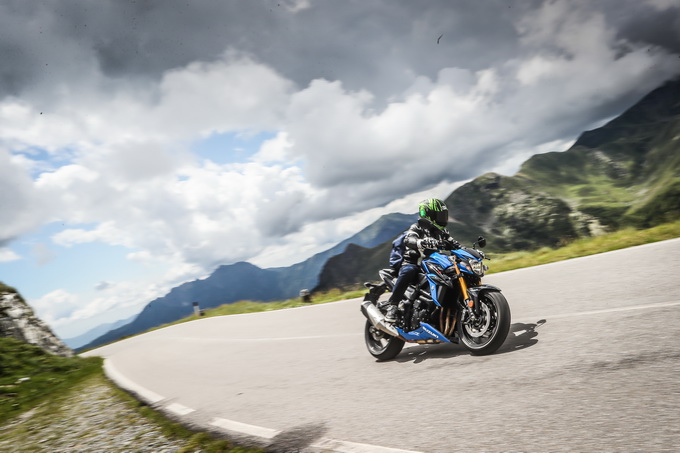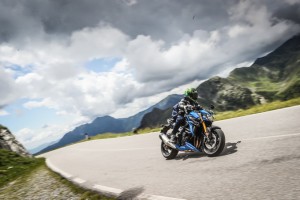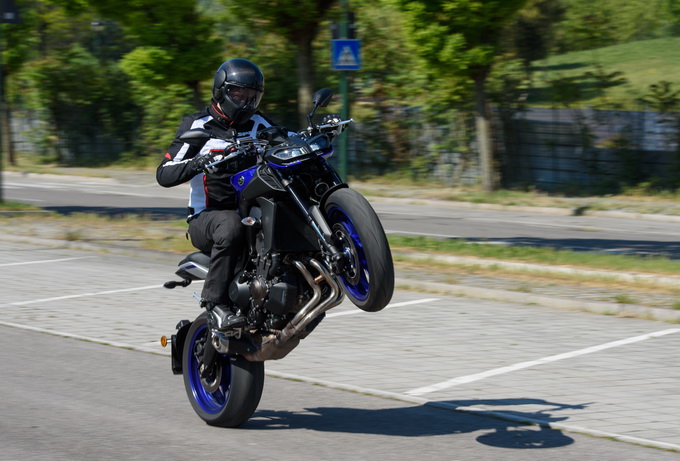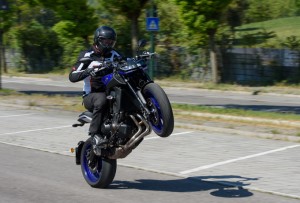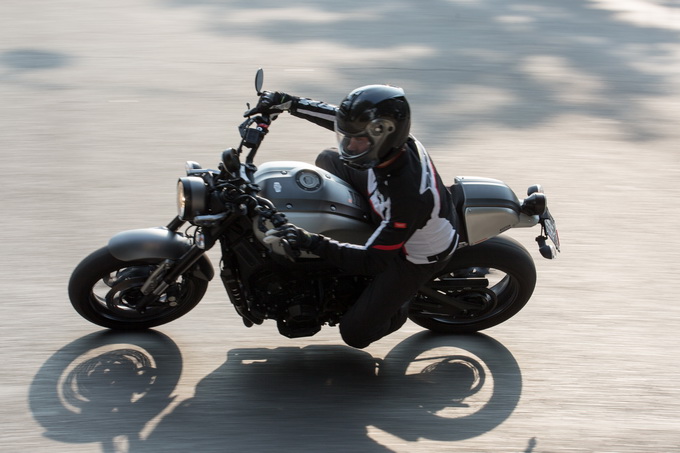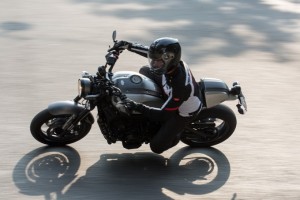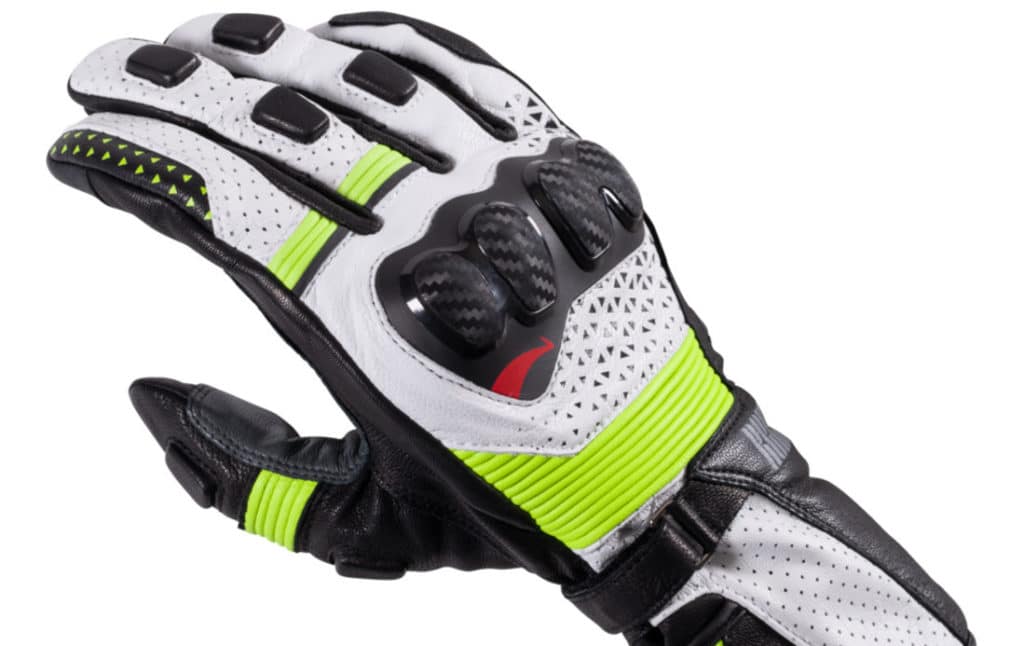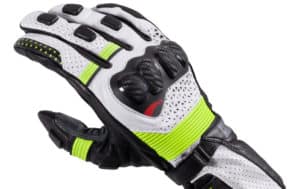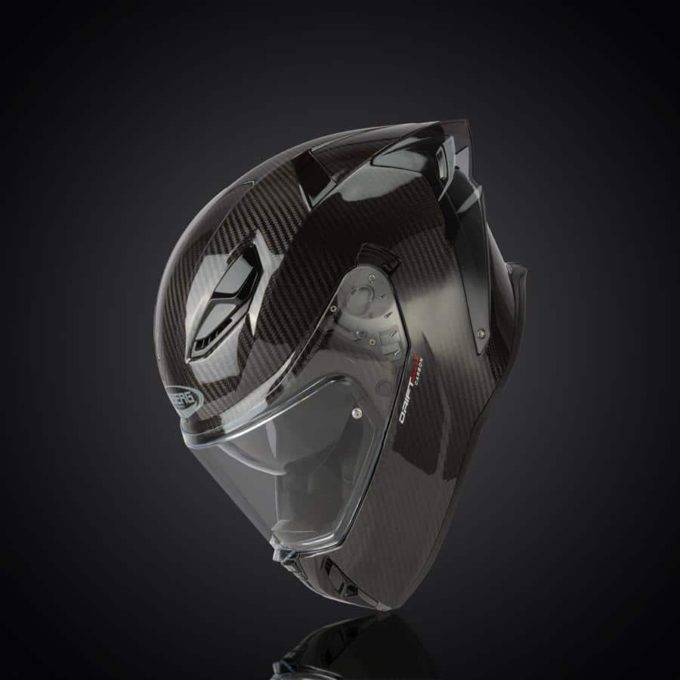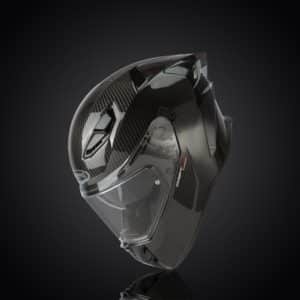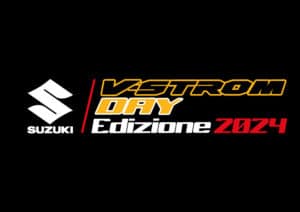Suzuki Motorcycle Economy Run 2015 – in search of the consumption record
With the Burgman 200 close to the 90 km/l threshold!
Suzuki Motorcycle Economy Run 2015: 2 motorbikes and 2 scooters, over 4 hours of travel, for a total of approximately 240 km, to find out how economical they can be in consumption, all certified by Dekra and assisted by TomTom to follow mixed routes and with rather tortuous parts. The declared values (WMTC) for consumption range from 21 km/l of the V-Strom 1000 (the most virtuous in its segment) to 51 of the Adress 110. The objective was to go beyond these values, the results are were surprising, with data that often go beyond double the declared values, up to 89,5 km/l of the Burgman 200!
The conditions, why a challenge on consumption in the motorcycle sector?
Suzuki has been active in for years this sense, the effort for the limiting emissions and increasing efficiency of its engines and vehicles was huge. Concepts like this demonstrate this SCEM (Suzuki Composite Electrochemical Material), a cylinder surface treatment that reduces friction and optimizes heat dissipation, the pistons and rings built with techniques and materials that reduce weight and friction, or the multi-hole injectors. But the effort does not end here, every single component is the subject of attention to improve efficiency even if only slightly, overall reaching values that were once unthinkable. This is how they are used roller bearings for the distribution rocker arms, the ISC system to optimize cold starts, iridium spark plugs for an always optimal spark, up to the search for the highest possible compression ratio for that type of engine, because the higher the value, the lower the consumption. This attention then produces further ones advantages in terms of reliability and therefore maintenance costs. In recent years it has thus been possible to offer at reasonable prices the extension of the warranty, from 1 or 2 years up to a total of 4, or maintenance packages at an agreed price. The flagships of the Hamamatsu company are also the Sara roadside assistance program for up to 8 years of vehicle life, with a 12-month extension for each service carried out, and the 21 free Suzuki checks for life. Lastly, My Suzuki: an interesting initiative aimed at avoiding falsification and scams, which certifies the truthfulness of the information in the maintenance booklet through a web service.
The Motorcycle Economy Run – instructions for use
The mechanism is simple: equal routes for everyone, identical vehicles, an expected time to be respected with a margin of +/- 5 minutes and the aim of consuming the least amount of fuel possible. Suzuki though takes it very seriously, therefore a partner of the initiative, as well as TomTom and Givi for navigator and mounting brackets, it is Dekra, which certifies the data on the surveys and the absolute equality of conditions for all participants. So the vehicles, 4 per model, are drawn by lot, anti-theft seals are applied to the tanks and the same thing is done for the tire valves, the pressure of which influences consumption not even marginally. For the rest it is possible to manage the driving as you prefer, even proceeding with the engine off in some situations, if you believe it can contribute to the result (in reality we will see that it is an ineffective trick). The models chosen are, in order of declared consumption, the Adress 110, the Inazuma 250, the Burgman 200 and finally the V-Strom 1000. Since the result is evaluated based on the total quantity of petrol consumed, the latter "weighs" in a higher way, also in light of a longer route, of approximately 80 km. For Inazuma and Burgman, however, the kilometers are 59, with the same route to follow, while for the Adress they are 41. In total, approximately 240, to be covered in an expected time of just over 4 hours. A non-causal choice, because the best results are obtained precisely around this average speed. Contrary to what some may believe, below a certain threshold efficiency drops and consumption increases.
It would be useless to deny it, among the testers, journalists or bloggers, a good portion cares very much about the competitive aspect of riding a motorbike. The challenge over time is always hot, but any type of competition proposed warms the spirits. However, a competition on consumption, at least initially, seemed to be the "least fun" one that could be proposed. Those who are usually used to using a lot of gas are asked to dose it to safeguard the environment by reducing emissions. But then you start to think about the fact that it is a challenge where sensitivity is important and it is an important skill for those who know how to go fast on a motorbike, and for avoid starting from a standstill and reaccelerating, the number one enemy of low consumption, you need to have thehave a long eye and know how to handle all situations with great skill, brushing the curves to keep the speed as constant as possible. In the end you find yourself taking a risk, using every last centimeter of available road with a scooter with less than 10 horsepower, having fun challenging the rest of the group, almost more than on the curbs of a track. Then there are the nightmares and the tricks, among the former we mention traffic lights and level crossings, in this a good dose of luck never hurts, among the latter "taking the slipstream" is what was the most popular. Staying close to a truck along a stretch of motorway reduces consumption quite a bit, provided you know how to do it safely without risking your own safety and that of others, but staying in the wake of another motorbike also gives you some advantages. Where there was a windscreen or a fairing the head lowered to seek maximum aerodynamics and on downhill sections the engine sometimes stopped. However, this is by no means guaranteed to provide significant advantages. Restarting and having to accelerate from lower speeds penalizes and can even eliminate the advantage gained, and it is also out of the question to be able to do this with a scooter, whose automatic transmission only "cuts off" at speed close to zero. Between cunning (some very secret and not revealed among the participants) and fortune, in the end what matters most is the management of the gas and the reading of the traffic and the best possible trajectory, because the speed must always remain as constant as possible, and not too much low, because below 60-65 km/h (but the figure varies from half to half) the efficiency drops.
The results and final considerations
Two days of challenges, 8 journalists per day, 16 in total. Obviously there was a prize to incentivize the competitors, us first and foremost, who took it quite seriously. At the end of the day we tried to analyze what we had done, without major regrets for errors or driving behaviors that had not preserved the result. What matters, however, is not the ranking, although for us finishing third was a small satisfaction, but the consumption data. Compared to declared values that ranged from 51 km/l of the Adress 110 to 21 of the large enduro V-Strom 1000, the results went decidedly further. With the exception of theAdress 110, which "stops" at just under 80 km/l (about 60% better than declared), the other three vehicles even doubled the reference values! Surprising, perhaps more than the others, is that of V-Strom 1000, capable of 42,4 km/l in the hands of the winner, 38 in ours. Perhaps of all the tests this was the one where we didn't do the best possible, because initially we were convinced that we could maintain a pace higher than that which actually rewarded consumption. However, we managed to prevail in the overall ranking with the Inazuma 250, with which we covered the 60 km route with 715 milliliters of petrol, almost 84 km/l! Also the Burgman 200 recorded sensational results, with the record of 670 milliliters on the same route as the Inazuma (60 km) equivalent to an astonishing 89,5 km/l! Lots of data that lead us to a similar consideration for all the vehicles used: Suzuki in particular, even if we believe that the competition has not been idle, has invested heavily, achieving surprising results even just a few years ago in the field of engine efficiency and its products. In "normal" use we had already seen this, both on large motorbikes such as the V-Strom 1000 (leader in consumption in its segment), but also on the Burgman 125 which we had tested last year for over 500 km and found negligible consumption. In a test like this, where the limit is sought by trying to use the vehicles at their point of maximum efficiency, the data recorded becomes exceptional, almost incredible, the overall figure speaks of less than 4 liters of fuel to travel approximately 240 km! Looking at the data with a little attention, we realize that all those tricks, whether legitimate or not, had very little impact on the results of the various competitors, what counted were these little technological jewels, only supported by the skill of the best participants , capable of exploiting them in the best way.
Clothing used during tests:
Jacket: Spidi Street Tex jacket
Trousers: Furious Tex JEANS
Gloves: Spidi Jab RR
Boots: Dainese Latitour GoreTex
Helmet: Scorpion EXO-220
if you want to always be updated on our news
Follow us here

